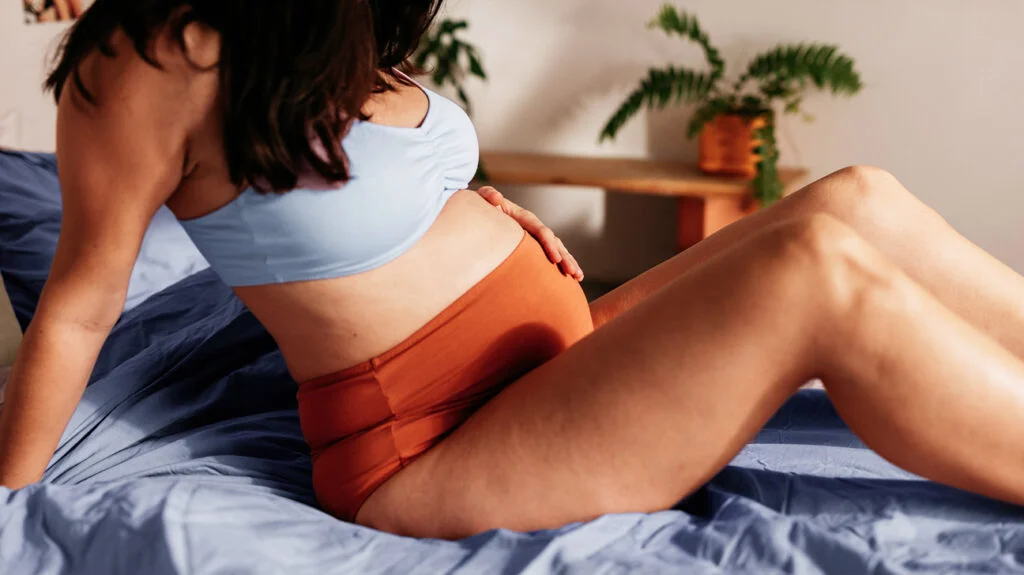Cramps are a common experience for many women, but distinguishing between pregnancy cramps and period cramps can often be confusing. While they might feel similar at first, they occur due to different reasons and require different levels of attention. Understanding the differences between Pregnancy Cramps vs Period Cramps can help you identify your body’s needs and make informed decisions about your health.
In this blog, we’ll delve into the causes, symptoms, and key differences between these types of cramps, helping you decode your body’s signals.
Understanding Period Cramps
Period cramps, medically known as dysmenorrhea, occur due to the contraction of the uterus during menstruation. These contractions help shed the uterine lining, which happens every month when no fertilization occurs.
Common Characteristics of Period Cramps:
- Timing: Begin 1–2 days before menstruation and peak during the first 2–3 days of your period.
- Location: Felt in the lower abdomen, back, and sometimes radiating to the thighs.
- Sensation: Aching, throbbing, or sharp pain that varies in intensity.
- Duration: Usually lasts a few hours to a couple of days.
What Causes Period Cramps?
Period cramps are caused by prostaglandins, hormone-like chemicals that stimulate uterine contractions. Higher levels of prostaglandins can lead to more severe cramps. Factors like stress, hormonal imbalances, or underlying conditions (e.g., endometriosis) can also affect cramping intensity.
Understanding Pregnancy Cramps
Pregnancy cramps are typically mild and occur for different reasons, especially during early pregnancy. As your body adjusts to support a growing fetus, the uterus expands, ligaments stretch, and hormonal changes occur, leading to cramping sensations.
Common Characteristics of Pregnancy Cramps:
- Timing: Early pregnancy cramps occur around implantation or in the first trimester.
- Location: Lower abdomen or pelvic region, similar to period cramps, but can also involve light pulling or twinges.
- Sensation: Mild, intermittent discomfort without sharp or severe pain.
- Duration: May last for a few days or intermittently throughout early pregnancy.
Key Differences Between Pregnancy Cramps vs Period Cramps
Although they can feel similar, there are notable differences between Pregnancy Cramps vs Period Cramps:
| Feature | Pregnancy Cramps | Period Cramps |
|---|---|---|
| Timing | Occur before a missed period or in early pregnancy. | Start just before or during menstruation. |
| Intensity | Mild and sporadic. | Can range from mild to severe. |
| Duration | Short-lived or intermittent. | Lasts for 1–3 days. |
| Other Symptoms | Light spotting, nausea, fatigue. | Heavy bleeding, mood swings, fatigue. |
| Trigger | Uterine stretching, implantation. | Uterine contractions. |
Signs That Indicate Pregnancy Cramps
Pregnancy cramps are often accompanied by early pregnancy symptoms, including:
- Spotting (Implantation Bleeding): Light pink or brown spotting that occurs when the fertilized egg attaches to the uterine wall.
- Tender Breasts: Hormonal changes can cause breast tenderness or swelling.
- Fatigue: Increased progesterone levels lead to feelings of tiredness.
- Nausea or Morning Sickness: A common symptom in early pregnancy.
When to See a Doctor
If you’re experiencing cramps and aren’t sure whether they’re related to pregnancy or menstruation, consider the following:
See a Doctor for Pregnancy Cramps if:
- Cramps are accompanied by heavy bleeding or severe pain.
- You experience sharp pains on one side of the abdomen (a possible sign of ectopic pregnancy).
- There are signs of miscarriage, such as tissue passing or consistent heavy bleeding.
See a Doctor for Period Cramps if:
- The pain is severe enough to interfere with daily activities.
- Cramps persist longer than usual or occur outside your cycle.
- You suspect underlying issues like endometriosis or fibroids.
Coping with Cramps
Managing cramps, whether from pregnancy or periods, involves a combination of lifestyle changes and medical interventions.
Natural Remedies:
- Heat Therapy: Apply a heating pad to your lower abdomen to relieve cramps.
- Hydration: Drinking water can reduce bloating and ease discomfort.
- Dietary Adjustments: Consume anti-inflammatory foods like ginger, turmeric, and green leafy vegetables.
- Gentle Exercise: Activities like yoga or walking can improve circulation and reduce cramping.
Medical Options:
- For Period Cramps: Over-the-counter pain relievers like ibuprofen can help.
- For Pregnancy Cramps: Avoid self-medicating and consult your doctor for safe options.
Myths About Pregnancy and Period Cramps
1. Myth: Pregnancy cramps are always severe.
Truth: Most pregnancy cramps are mild and intermittent. Severe pain requires immediate medical attention.
2. Myth: Period cramps mean you’re not pregnant.
Truth: Implantation cramps can feel similar to period cramps, making it challenging to differentiate without a pregnancy test.
3. Myth: Period cramps disappear with age.
Truth: While they may decrease after childbirth, underlying conditions can cause them to persist.
FAQs About Pregnancy Cramps vs Period Cramps
1. Can pregnancy cramps occur before a missed period?
Yes, pregnancy cramps due to implantation can happen 6–12 days after ovulation, before a missed period.
2. How can I tell if cramps mean I’m pregnant or about to get my period?
Look for accompanying symptoms like implantation bleeding, nausea, or fatigue for pregnancy, and heavy bleeding or mood swings for periods.
3. Are severe cramps normal during pregnancy?
No, severe cramps should be evaluated by a doctor as they could indicate complications.
4. Can I use pain relievers for cramps?
Always consult a healthcare provider before taking any medication during pregnancy.
5. Why are period cramps sometimes more intense than usual?
High prostaglandin levels, stress, or conditions like endometriosis can intensify period cramps.
Read More
